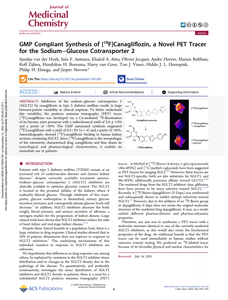In mijn vorige blog schreef ik dat ik "groene chemie" niet zo'n goede term vind. Dit bericht borduurt daar enigszins op voort en is mijn persoonlijke kritische noot bij de transitie naar een groene(re) economie die momenteel in volle gang is.

In 1996 innovative, double major teacher education programs for Physics & Mathematics and Physics & Chemistry were initiated at the University of San Carlos in Cebu, Philippines. Both programs require 4 years of study. From the outset the focus was on making a difference in the quality of Science and Mathematics Teacher Education, producing teachers with a good mastery of subject matter and able to teach the subjects in exciting and effective ways in typical Philippine crowded and resource-poor classrooms. The programs recruit top high school graduates using a promotion and scholarship scheme and then expose them to the best science lecturers at the university, and create a special learning environment for the duration of their training. Early 2011 a study was conducted to assess long term effects of the programs through a tracer study of the 300 alumni, interviews, and 22classroom visits to observe their teaching. Of the 300 alumni 245 are still teaching of whom 33 abroad (mainly USA) and 212 in the Philippines. Alumni are highly valued by principals of the top schools in Cebu and their students win many local and even national science competitions. Their teaching is competent with lots of interaction and good subject matter mastery, but they are also facing some typical Philippine education problems.
MULTIFILE

Inhibition of the sodium−glucose cotransporter 2 (SGLT2) by canagliflozin in type 2 diabetes mellitus results in large between-patient variability in clinical response. To better understand this variability, the positron emission tomography (PET) tracer [18F]canagliflozin was developed via a Cu-mediated 18F-fluorination of its boronic ester precursor with a radiochemical yield of 2.0 ± 1.9% and a purity of >95%. The GMP automated synthesis originated [18F]canagliflozin with a yield of 0.5−3% (n = 4) and a purity of >95%. Autoradiography showed [18F]canagliflozin binding in human kidney sections containing SGLT2. Since [18F]canagliflozin is the isotopologue of the extensively characterized drug canagliflozin and thus shares its toxicological and pharmacological characteristics, it enables its immediate use in patients.

Aanleiding: De belangstelling voor gezonde en veilige voeding is groot. Bij de gezondheidseffecten van voeding spelen de darmen een cruciale rol. Verschillende soorten bedrijven hebben behoefte aan natuurgetrouwe testmodellen om de effecten van voeding op de darmen te bestuderen. Ze zijn vooral op zoek naar modellen waarvan de uitkomsten direct vertaalbaar zijn naar het doelorganisme (de mens of bijvoorbeeld het varken) en die niet gebruikmaken van kostbare en maatschappelijke beladen dierproeven. Doelstelling Het project 2-REAL-GUTS heeft als doel om twee innovatieve dierproefvrije darmmodellen geschikt te maken voor onderzoek naar voedingsconcepten en -ingrediënten. De twee darmmodellen die worden toegepast zijn darmorganoïden, minidarmorgaantjes bestaande uit stamcellen, en darmexplants bestaande uit hele stukjes darm verkregen uit relevante organismen. Beide modellen hebben potentieel heel uitgebreide toepassingsmogelijkheden en hebben ook grote voordelen ten opzichte van de huidige veelgebruikte cellijnen, omdat ze meerdere in de darm aanwezige celtypen bevatten en uit verschillende specifieke darmregio's te verkrijgen zijn. Gezamenlijk gaan de partners werken aan: 1) het aanpassen van de kweekomstandigheden zodat darmmodellen geschikt worden om de vragen van partners te beantwoorden; 2) het vaststellen van de toepassingsmogelijkheden van de darmmodellen door verschillende stoffen en producten te testen. Beoogde resultaten Kennisconferenties, publicaties en exploitatie van de modellen zullen zorgen voor het verspreiden van de opgedane kennis. Omdat het project gebruikmaakt van moderne, op de toekomst gerichte laboratoriumtechnieken (kweekmethoden met stamcellen en vitaal weefsel, moleculaire analyses en microscopie), leent het zich uitstekend om geïmplementeerd te worden in het hbo-onderwijs. Als spin-off zal het project dan ook voorzien in een specifieke, voor Nederland unieke hbo-minor op het gebied van stamcel- en aanverwante technologie (zoals organ-on-a-chiptechnologie).
The postdoc candidate, Giuliana Scuderi, will strengthen the connection between the research group Biobased Buildings (BB), (collaboration between Avans University of Applied Sciences and HZ University of Applied Sciences (HZ), and the Civil Engineering bachelor programme (CE) of HZ. The proposed research aims at deepening the knowledge about the mechanical properties of biobased materials for the application in the structural and infrastructural sectors. The research is relevant for the professional field, which is looking for safe and sustainable alternatives to traditional building materials (such as lignin asphalt, biobased panels for bridge constructions, etc.). The study of the mechanical behaviour of traditional materials (such as concrete and steel) is already part of the CE curriculum, but the ambition of this postdoc is that also BB principles are applied and visible. Therefore, from the first year of the programme, the postdoc will develop a biobased material science line and will facilitate applied research experiences for students, in collaboration with engineering and architectural companies, material producers and governmental bodies. Consequently, a new generation of environmentally sensitive civil engineers could be trained, as the labour market requires. The subject is broad and relevant for the future of our built environment, with possible connections with other fields of study, such as Architecture, Engineering, Economics and Chemistry. The project is also relevant for the National Science Agenda (NWA), being a crossover between the routes “Materialen – Made in Holland” and “Circulaire economie en grondstoffenefficiëntie”. The final products will be ready-to-use guidelines for the applications of biobased materials, a portfolio of applications and examples, and a new continuous learning line about biobased material science within the CE curriculum. The postdoc will be mentored and supervised by the Lector of the research group and by the study programme coordinator. The personnel policy and job function series of HZ facilitates the development opportunity.